Vasodilation
Products for Vasodilation
- Cat.No. Product Name Information
-
GC45602
α-Linolenic Acid-d5 MaxSpec• Standard

-
GC40105
βARK1 Inhibitor
βARK1 Inhibitor (methyl 5-[2-(5-nitro-2-furyl)vinyl]-2-furoate) is a GRK2 (β-ARK1) inhibitor.

-
GC41661
(±)-4-hydroxy Propranolol β-D-Glucuronide
(±)-4-hydroxy Propranolol β-D-glucuronide is a metabolite of (±)-4-hydroxy propranolol, which is a metabolite of propranolol.

-
GC40386
(±)11(12)-EpETE
Eicosapentaenoic acid is converted to epoxyeicosatetraenoic acids (EpETE) by several cytochrome P450 isoforms.

-
GC40430
(±)14(15)-EET
(±)14(15)-EET is biosynthesized in rat and rabbit liver microsomes by CYP450.

-
GC41651
(±)14(15)-EET-SI
Arachidonic acid is metabolized in the vascular endothelium to epoxytrienoic acids (EETs or EpETrEs) by cytochrome P450 enzymes.

-
GC41288
(±)17(18)-EpETE-Ethanolamide
(±)17(18)-EpETE-Ethanolamide is an ω-3 endocannabinoid epoxide.

-
GC40436
(±)18-HETE
(±)18-HETE is the racemic version of a cytochrome P450 (CYP450) metabolite of arachidonic acid.

-
GC41655
(±)19(20)-EDP Ethanolamide
(±)19(20)-EDP ethanolamide is an ω-3 endocannabinoid epoxide and cannabinoid (CB) receptor agonist (EC50s = 108 and 280 nM for CB1 and CB2, respectively).

-
GC40437
(±)5(6)-DiHET lactone
5,6-DiHET lactone is a lactonized form of 5,6-EET and 5,6-DiHET.

-
GC40438
(±)5(6)-EET
5(6)-EET is a fully racemic version of the enantiomeric forms biosynthesized from arachidonic acid by cytochrome P450 enzymes.

-
GC40421
(±)8(9)-EE-14(Z)-E
(±)14(15)-EE-8(Z)-E is a potent vasodilator in bovine coronary arteries.

-
GC18637
11β-Prostaglandin F2α
11β-Prostaglandin F2α (11β-PGF2α) is the primary plasma metabolite of PGD2 in vivo.
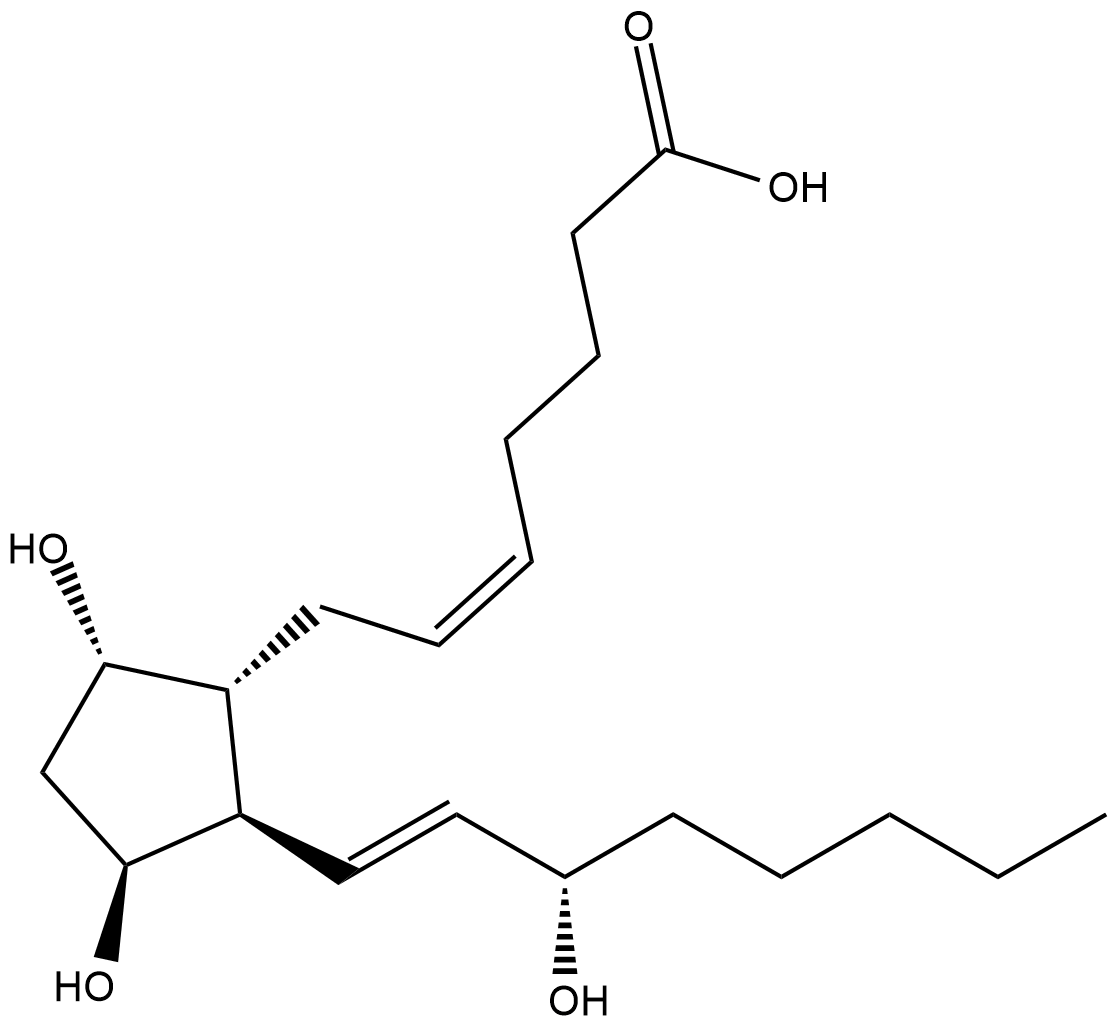
-
GC40425
14,15-EE-8(Z)-E
Epoxyeicosatrienoic acids (EETs), such as 11(12)-EET and 14(15)-EET, are cytochrome P450 metabolites of arachidonic acid that have been identified as endothelium-derived hyperpolarizing factors with vasodilator activity.

-
GC46438
14S(15R)-EET
A cytochrome P450 metabolite of arachidonic acid

-
GC40457
19(R)-HETE
19-HETE is one of the major cytochrome P450 (CYP450) metabolites of arachidonic acid that is released from the kidney in response to angiotensin II.

-
GC40503
2-HOBA
2-HOBA (2-HOBA) a selective dicarbonyl scavenger, is an antioxidant and scavanger of free radicals and isolevuglandins (IsoLGs).

-
GC41104
20-carboxy Arachidonic Acid
20-carboxy Arachidonic acid (20-COOH-AA) is the major metabolite of 20-HETE that is produced in renal tubular epithelial, endothelial, and microvascular smooth muscle cell cultures.

-
GC40336
5-cis Carbaprostacyclin
5-cis Carbaprostacyclin is a stable analog of PGI2 and an isomer of carbaprostacyclin.
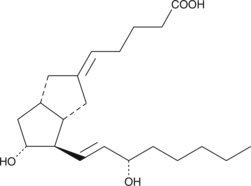
-
GC40586
6β-Prostaglandin I1
6β-PGI1 is a stable PGI2 analog resistant to hydrolysis in aqueous solutions.
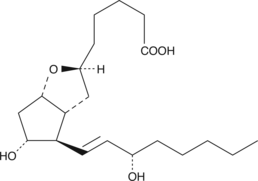
-
GC18820
6-keto Prostaglandin E1
6-keto PGE1 is a metabolite isolated after the incubation of PGI2 with rabbit liver microsomes.
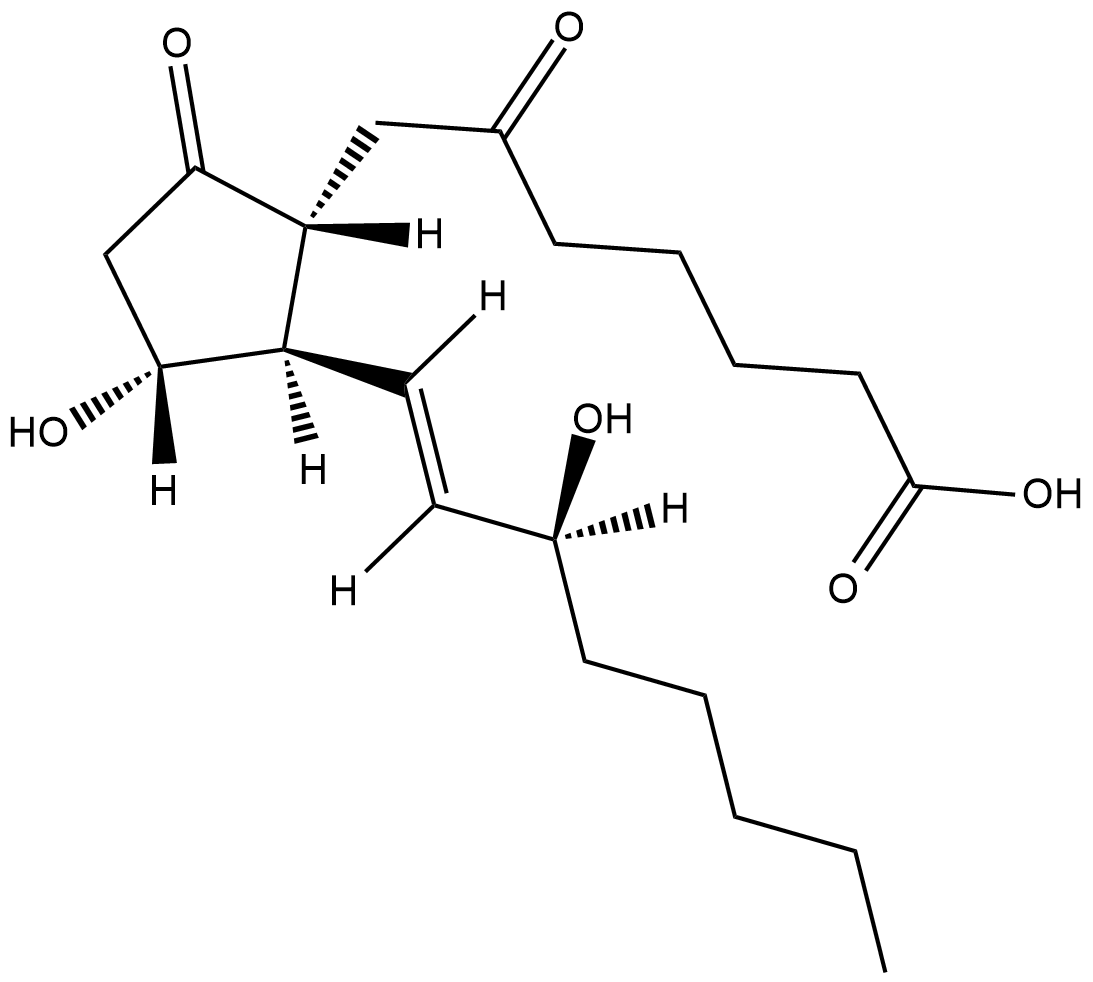
-
GC49576
Abnormal Cannabidiol-d3
Internal standard for the quantification of abnormal cannabidiol

-
GC42738
Adrenomedullin (13-52) (human) (trifluoroacetate salt)
Adrenomedullin (13-52) is a truncated form of adrenomedullin (1-52).

-
GC42746
AFP 07 (free acid)
Prostaglandin I2 is an unstable prostanoid which, through the 'I prostanoid' (IP) receptor, inhibits platelet aggregation and promotes vasodilatation in pulmonary vascular beds.

-
GC52023
Alfuzosin-d7
An internal standard for the quantification of alfuzosin

-
GC42778
Amauromine
Amauromine is a neutral antagonist of the cannabinoid (CB) receptor CB1 that is selective for CB1 (Ki = 178 nM; Kb = 66.6 nM) over CB2, with no activity at CB2 receptors at concentrations up to 10 μM.

-
GC49638
Ambrisentan-d3
An internal standard for the quantification of ambrisentan

-
GC46856
Angiotensin II (5-8) (human, rat, mouse) (trifluoroacetate salt)
An endogenous angiotensin II fragment

-
GC52427
Apelin-12 (human, mouse, rat, bovine) (acetate)
An endogenous agonist of the APJ receptor

-
GC49314
Arecaidine propargyl ester (hydrobromide)
A muscarinic M2 agonist

-
GC49057
Azelastine-13C-d3 (hydrochloride)
An internal standard for the quantification of azelastine

-
GC18313
BAR501 Impurity
BAR501 impurity is an impurity found in the preparation of BAR501 that acts as an agonist of the G protein-coupled bile acid-activated receptor (GP-BAR1).
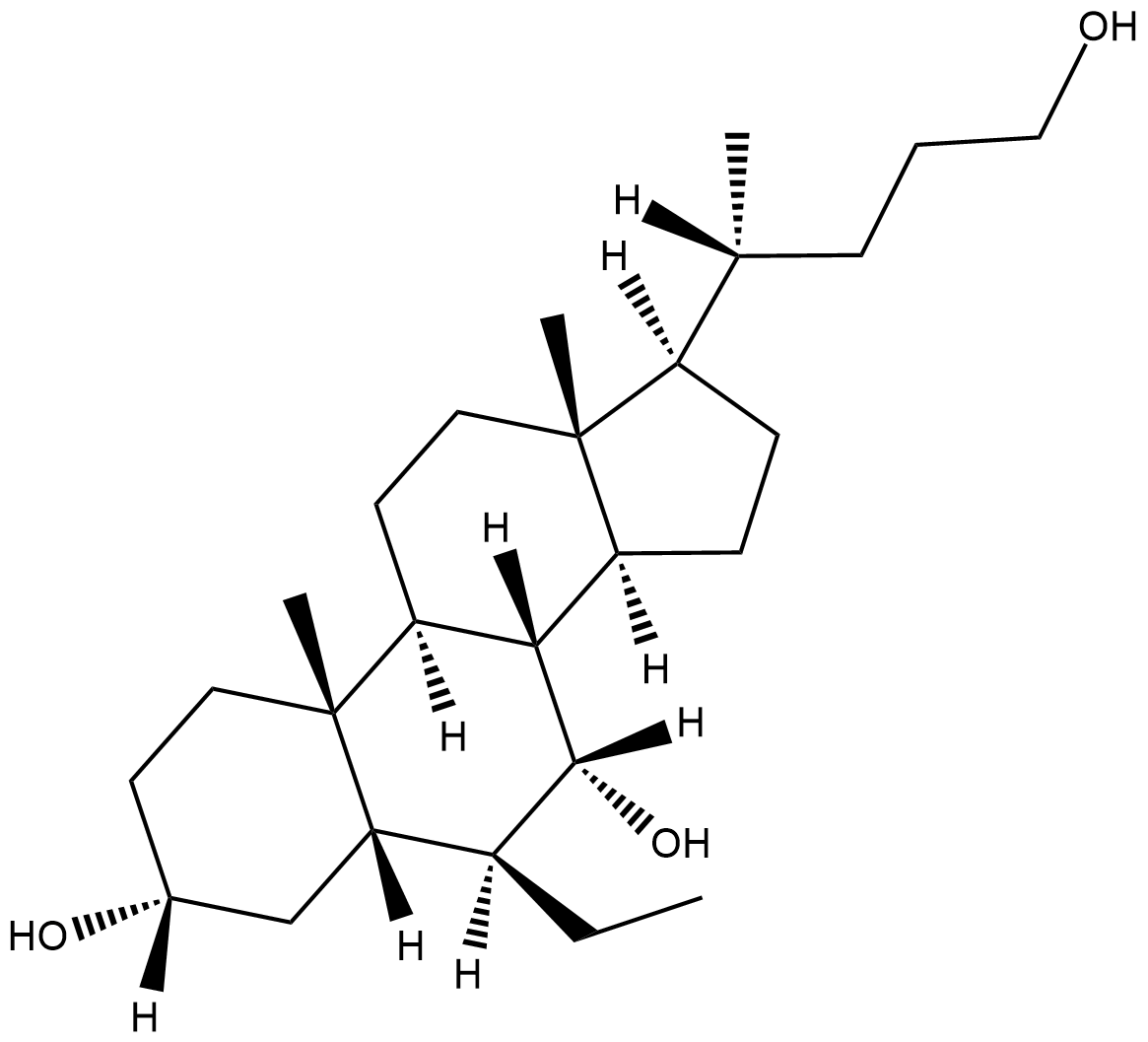
-
GC52145
Bradykinin (human, mouse, rat, bovine) (acetate)

-
GC49880
Bradykinin (trifluoroacetate salt)
An endogenous vasodilator

-
GC52424
Bradykinin Fragment (1-5) (trifluoroacetate salt)
A metabolite of bradykinin

-
GC47045
Carvedilol-d5
An internal standard for the quantification of carvedilol

-
GC41381
CAY10562
S-Nitrosothiols (RSNOs) are a class of molecules that function as exogenous and endogenous nitric oxide (NO) donors.

-
GC52006
CB-096
An inhibitor of RAN translation

-
GC47103
Clonidine-d4 (hydrochloride)
An internal standard for the quantification of clonidine

-
GC43399
Dehydro Amlodipine (fumarate)
Dehydro amlodipine is a potential impurity found in commercial preparations of amlodipine.

-
GC49866
Desmethyl Carvedilol
An active metabolite of carvedilol

-
GC46131
Diazoxide-d3
An internal standard for the quantification of diazoxide

-
GC49497
Dopamine-d4 (hydrochloride)
An internal standard for the quantification of dopamine

-
GC47268
Doxazosin-d8 (hydrochloride)
An internal standard for the quantification of doxazosin

-
GC45761
Flupirtine-d4 (hydrochloride)
An internal standard for the quantification of flupirtine

-
GC47371
Fosinopril-d7 (sodium salt)
An internal standard for the quantification of fosinopril

-
GC49089
FR900359
A cyclic depsipeptide and an inhibitor of Gαq, Gα11, and Gα14

-
GC49117
Guanadrel
An antihypertensive agent

-
GC47418
Gymnoascolide A
A fungal metabolite with fungicidal and vasodilatory activities

-
GC43802
HA-1004 (hydrochloride)
HA-1004 is an inhibitor of protein kinase G (PKG) and PKA (Kis = 1.4 and 2.3 μM, respectively).

-
GC43803
HA-1077 (hydrochloride)
Fasudil (HA-1077; AT877) dihydrochloride is a nonspecific RhoA/ROCK inhibitor and also has inhibitory effect on protein kinases, with an Ki of 0.33 μM for ROCK1, IC50s of 0.158 μM and 4.58 μM, 12.30 μM, 1.650 μM for ROCK2 and PKA, PKC, PKG, respectively. HA-1077 (hydrochloride) is also a potent Ca2+ channel antagonist and vasodilator.

-
GC49882
Hemokinin 1 (human) (trifluoroacetate salt)
A peptide agonist of NK1 receptors

-
GC49343
Isoproterenol-d7 (hydrochloride)
An internal standard for the quantification of isoproterenol

-
GC52310
L-Arginine-13C6 (hydrochloride)
An internal standard for the quantification of L-arginine

-
GC49374
L-Arginine-d7 (hydrochloride)
An internal standard for the quantification of L-arginine

-
GC44062
L-hydroxy Arginine (acetate)
L-hydroxy Arginine is a substrate for nitric oxide synthase in the catabolism of L-arginine to form nitric oxide.

-
GC40239
Limaprost-d3
Limaprost-d3 is intended for use as an internal standard for the quantification of limaprost by GC- or LC-MS.

-
GC49916
Lys-(Des-Arg9, Leu8)-Bradykinin (trifluoroacetate salt)
A bradykinin B1 receptor antagonist

-
GC47679
Minoxidil-d10
An internal standard for the quantification of minoxidil

-
GC44320
N-Arachidonoyl-L-Serine
Arachidonoyl amides of both amino acids and neurotransmitters such as dopamine have been previously reported in the literature.

-
GC49683
N-desethyl-N-methyl Vardenafil
A potential impurity found in commercial preparations of vardenafil

-
GC52045
N-desmethyl Azelastine
N-desmethyl Azelastine is a main active metabolite of Azelastine that is oxidatively metabolized by the cytochrome P450 enzyme system with a protein binding rate of 97% and an elimination half-life of 54 hours.

-
GC52132
N-desmethyl Diltiazem (hydrochloride)

-
GC44351
N-Desmethyl Sildenafil (citrate)
N-Desmethyl sildenafil is a major metabolite of sildenafil.

-
GC49301
Nesiritide (acetate)
A natriuretic peptide

-
GC49511
Nicorandil N-oxide
A metabolite of nicorandil

-
GC49086
Nicorandil-d4
An internal standard for the quantification of nicorandil

-
GC47776
Nisoldipine-d6
An internal standard for the quantification of nisoldipine

-
GC47824
Olmesartan Medoxomil-d6
An internal standard for the quantification of olmesartan medoxomil

-
GC49677
Olmesartan-d6
An internal standard for the quantification of olmesartan

-
GC44531
PACAP (1-27) (human, mouse, ovine, porcine, rat) (trifluoroacetate salt)
Pituitary adenylate cyclase-activating peptide (PACAP) (1-27) is a PACAP receptor agonist with IC50 values of 3, 2, and 5 nM, respectively, for rat PAC1, rat VPAC1, and human VPAC2 recombinant receptors expressed in CHO cells.
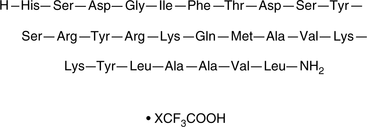
-
GC44557
PAR2 (1-6) (mouse, rat)
PAR2 (1-6) is a synthetic peptide agonist of proteinase-activated receptor 2 (PAR2) that corresponds to residues 1-6 of the amino terminal tethered ligand sequence of mouse and rat PAR2.

-
GC46202
Phenoxybenzamine-d5 (hydrochloride)
An internal standard for the quantification of phenoxybenzamine

-
GC44627
Phenylephrine Glucuronide
Phenylephrine glucuronide is a metabolite of the α1A-adrenergic receptor agonist phenylephrine .

-
GC44628
Phenylephrine-3-O-Sulfate
Phenylephrine-3-O-sulfate is metabolite of the α1A-adrenergic receptor agonist phenylephrine formed via sulfation.

-
GC18686
Prazobind
An α1-adrenergic receptor antagonist
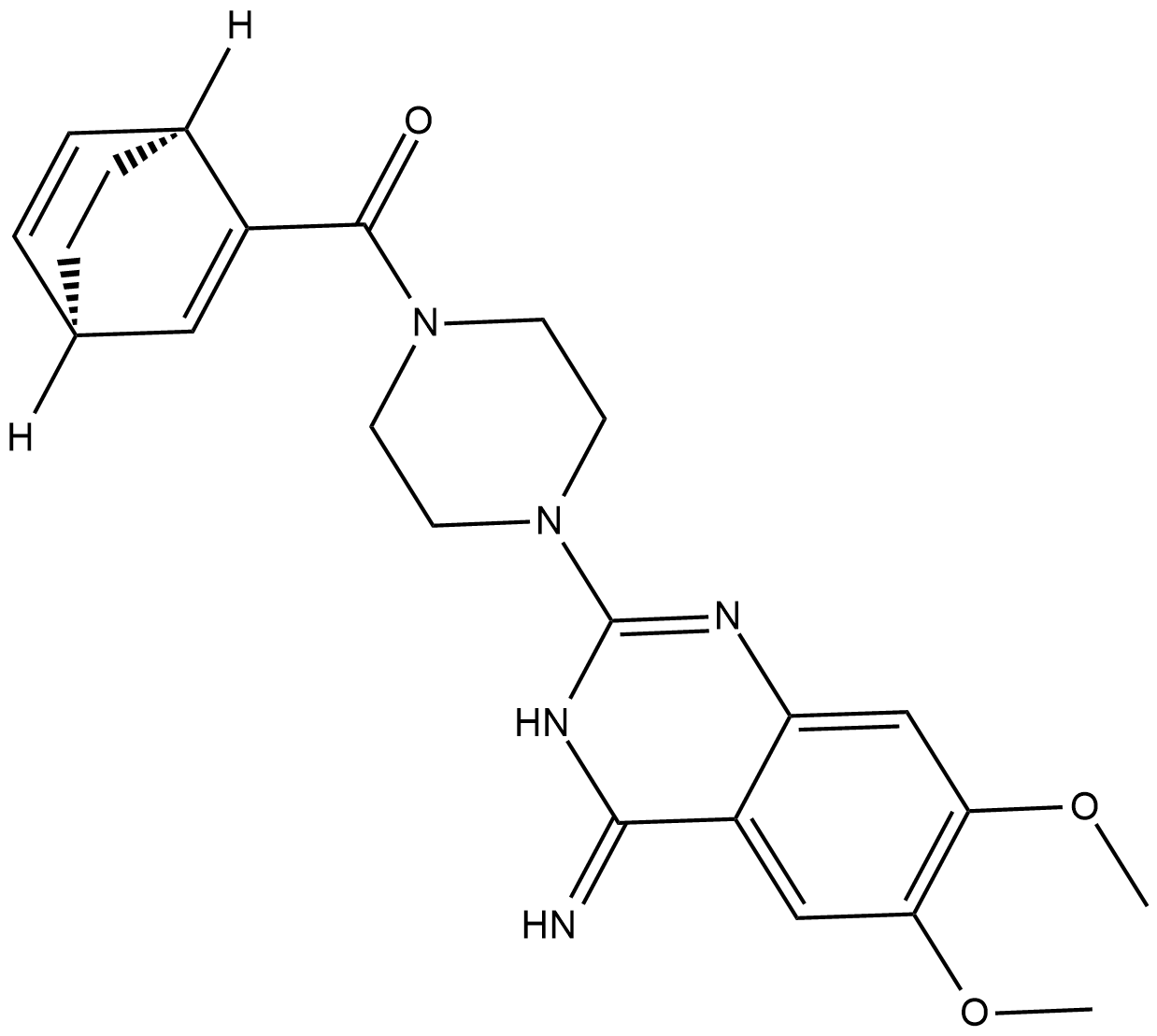
-
GC18310
Prostaglandin A1
Prostaglandin A1 (PGA1) was first isolated as a dehydration product of the PGE1 compounds found in human semen.
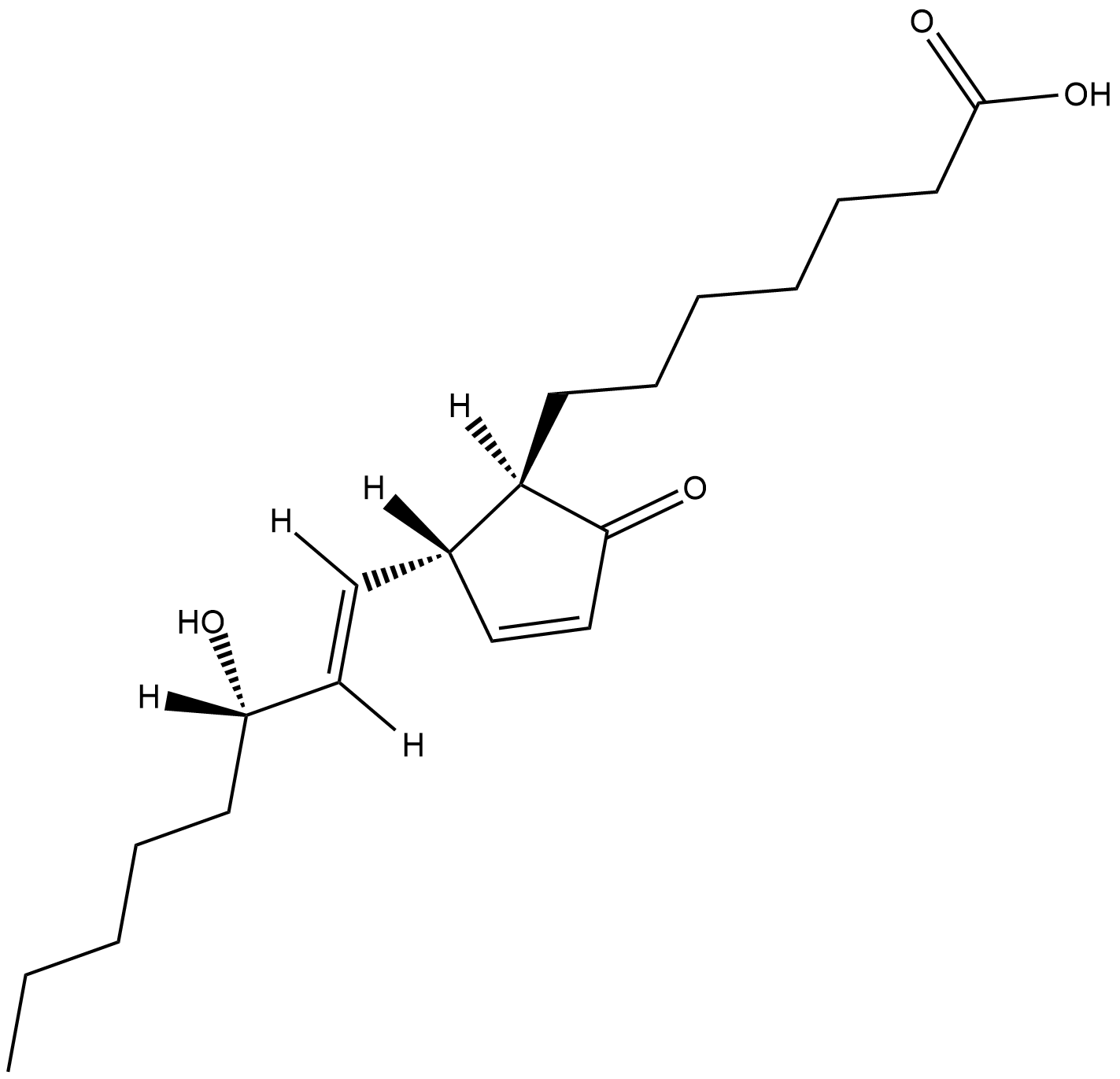
-
GC18353
Prostaglandin A2
A naturally occurring prostaglandin with antiviral/antitumor activity
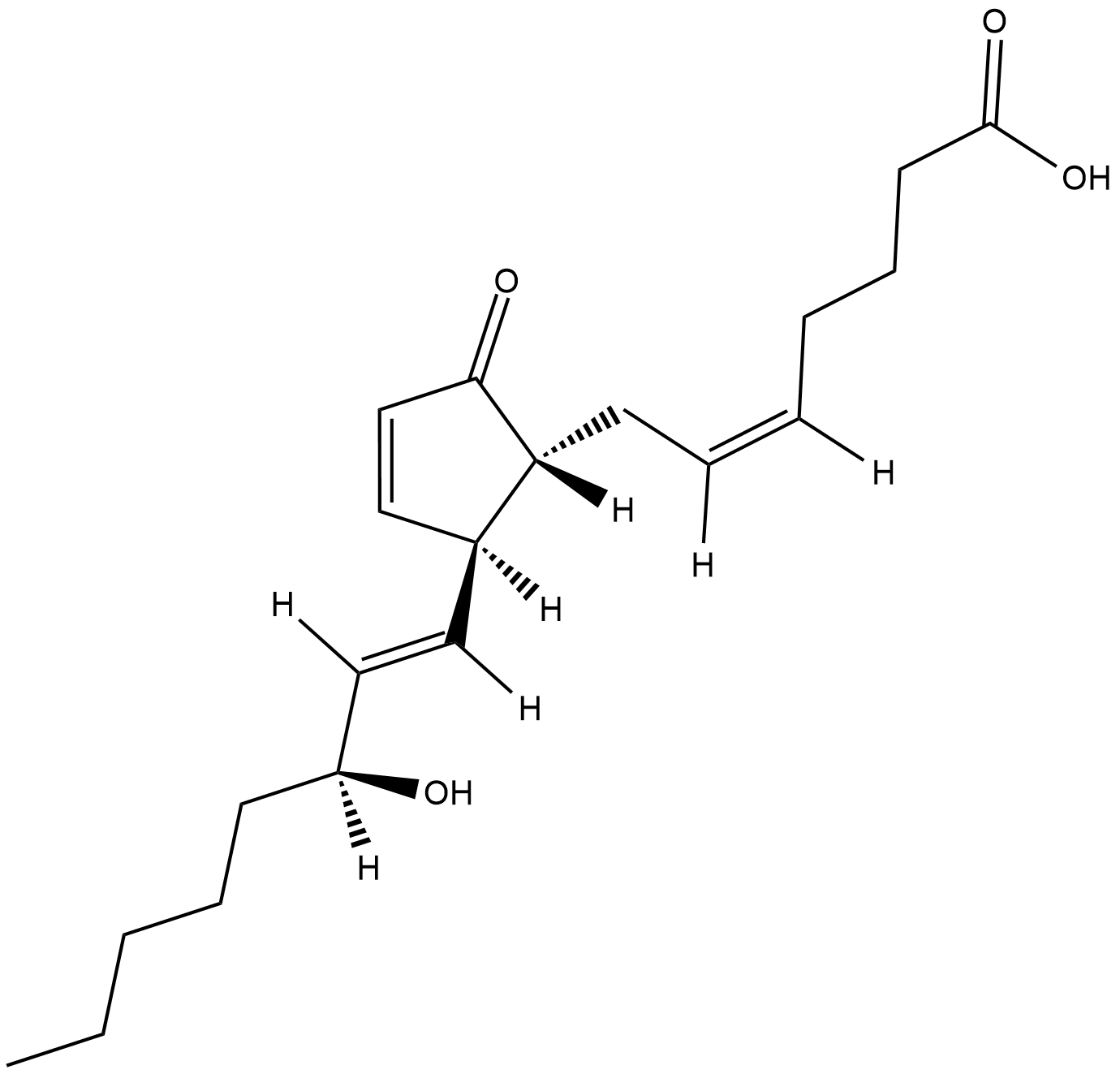
-
GC41170
Prostaglandin D2 methyl ester
Prostaglandin D2 (PGD2) is the major eicosanoid product of mast cells and is produced in large quantities by hematopoietic PGD synthase during allergic and asthmatic anaphylaxis.

-
GC18768
Prostaglandin E1 ethyl ester
Prostaglandin E1 (PGE1) is the theoretical cyclooxygenase metabolite of dihomo-γ-linolenic acid.
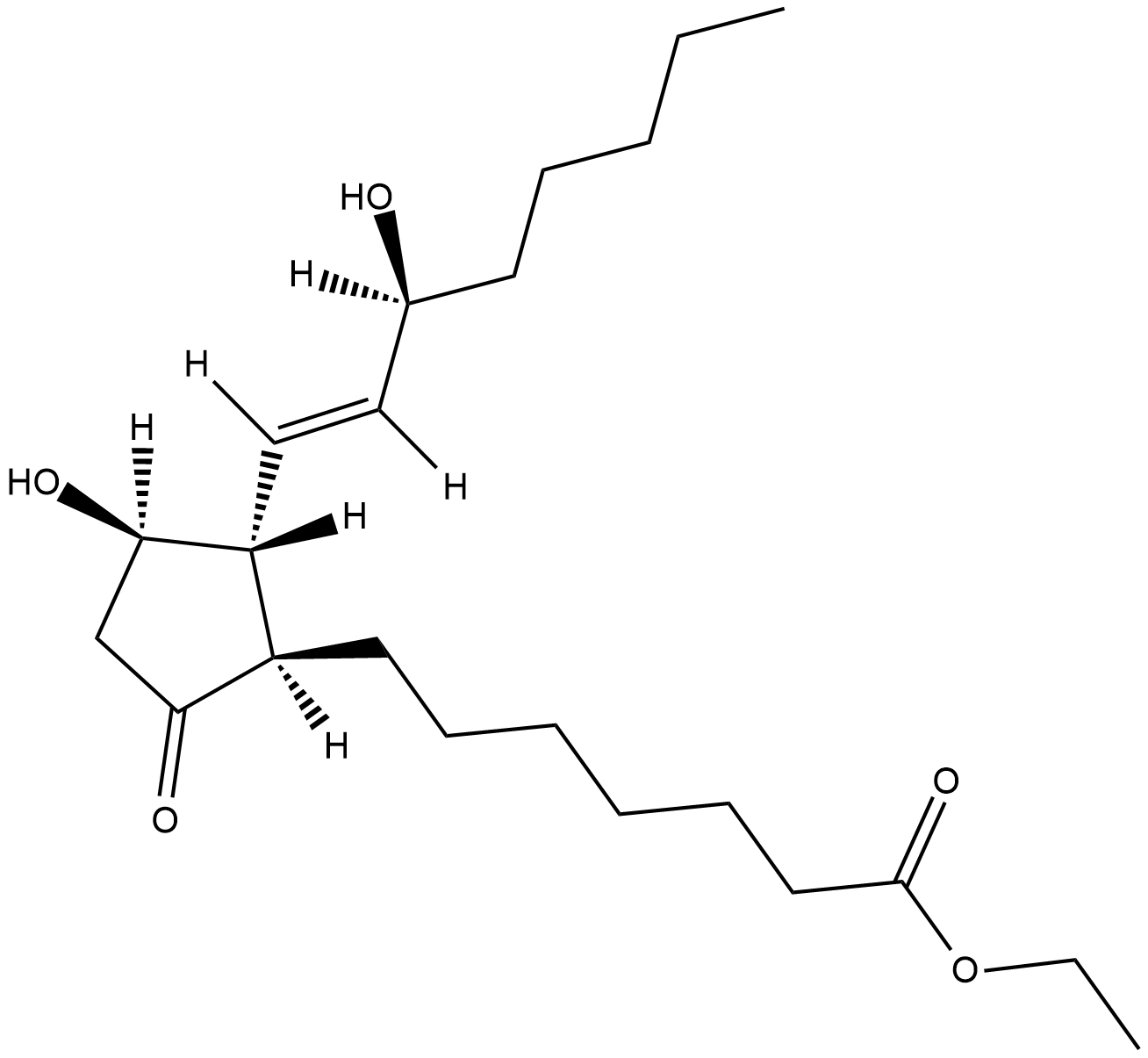
-
GC44732
Protopine (hydrochloride)
Protopine is an alkaloid found in Berberidaceae, Ranunculaceae, Rutaceae, Fumariaceae, and Papaveraceae with diverse biological activities.

-
GC45903
Quazinone
A PDE3 inhibitor

-
GC48513
Quinapril-d5
An internal standard for the quantification of quinapril

-
GC52034
Quinaprilat
Quinaprilat is an orally active non-mercapto Angiotensin Converting Enzyme (ACE) inhibitor, the active metabolite of Quinapril.

-
GC44803
rac-7-hydroxy Propranolol (hydrochloride)
rac-7-hydroxy Propranolol (hydrochloride) is a ring-hydroxylated isomer and metabolite of propranolol that is an antagonist at β-adrenergic receptors (0.95 potency relative to propranolol).

-
GC40967
rac-7-methoxy Propranolol
Propranolol, one of the first β-blockers used in cardiovascular medicine, inhibits β1-, β2-, and β3-adrenergic receptors with log KD values of -8.16, -9.08, and -6.93, respectively.

-
GC49108
Racecadotril-d5
An internal standard for the quantification of racecadotril

-
GC48052
Rilmenidine-d4
An internal standard for the quantification of rilmenidine

-
GC49679
Sauvagine (trifluoroacetate salt)
A neuropeptide hormone

-
GC52460
tcY-NH2 (trifluoroacetate salt)
A peptide antagonist of PAR4

-
GC48174
Thiorphan-d5
An internal standard for the quantification of thiorphan

-
GC19438
TMB 8 (hydrochloride)
TMB 8 is a non-competitive antagonist of nicotinic acetylcholine receptors (nAChRs) with IC50 values of 390 and 350 nM, respectively, for human muscle-type and α3β4 subunit-containing ganglionic nAChRs expressed in TE671/RD or SH-SY5Y cells.

-
GC46233
Trandolaprilat (hydrate)
Trandolaprilat (hydrate) is a potent angiotensin-converting enzyme (ACE) inhibitor.

-
GC48202
Treprostinil (diethanolamine salt)
Treprostinil (UT-15C) diethanolamine is a potent EP2, DP1 and IP agonist with Ki values of 3.6, 4.4, 32.1, 212, 826, 2505 and 4680 nM for EP2, DP1, IP, EP1, EP4, EP3 and FP, respectively.

-
GC49072
Tribenoside
A vasoprotective agent

-
GC49389
Tritylolmesartan Medoxomil
An intermediate in the synthesis of olmesartan medoxomil



